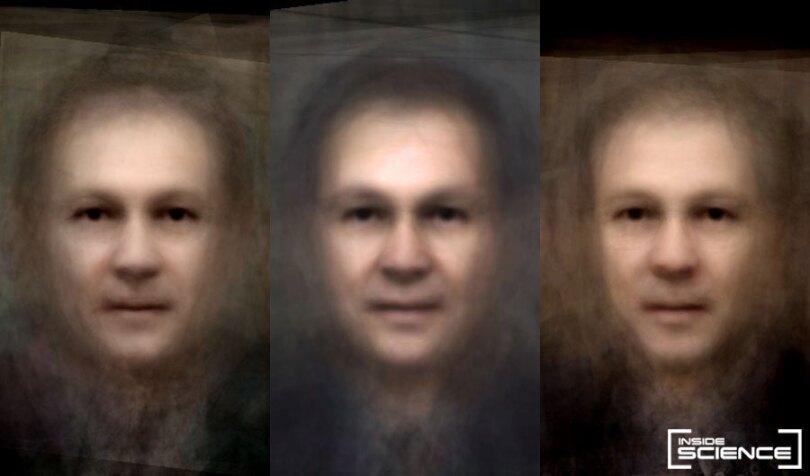The Face of the Average Science Nobel Prize Winner

From left to right, the average faces for past Nobel winners in physiology or medicine, physics, and chemistry.
Generated by Yuen Yiu using the online tool Smoishele by Olaf Janssen
(Inside Science) -- We are less than a week away from the first announcement for this year’s Nobel Prizes. In the past 10 years we have celebrated physicists who discovered graphene
The Nobel Prizes are considered by many to be the most prestigious awards in science. We have written about how luck and politics
An article published by the BBC
Here we have combined 199, 201, and 165 faces of past Nobel laureates in physiology or medicine, physics, and chemistry respectively, to reveal what an average science winner looks like.
You may have seen similar articles that showed the average faces of women from around the world
It is perhaps no surprise that all three of our average faces look male, middle-aged and white, since those are arguably the top three visible features shared by the laureates.
Image

Face created using the 18 female Nobel laureates in physiology or medicine, physics, and chemistry.
Generated by Yuen Yiu using the online tool Smoishele by Olaf Janssen.
For the science awards, the average age for a Nobel Prize winner is 58 and over 95% of laureates are male. For the physics prize, there have been more male laureates named John (8), Robert (6), James (5), William (5), Charles (5), Max (4) or George (4), than there have been female laureates (3). More than 80% of all Nobel Prizes have gone to just six countries: the United States, the United Kingdom, Germany, France, Russia or the former Soviet Union, and Sweden, home to the prize and its namesake Alfred Nobel.
The U.S. by itself has produced more Nobel laureates than any other country. Excluding the prizes in peace, economics and literature, there have been more than 280 Nobel-winning scientists hailing from the United States. The demographics of U.S. Nobel laureates mirror the group as a whole -- only 10 have been female, and none were of African American descent.
In science, African American women, with their intersectional identity as both women and people of color, are even more underrepresented than either group. According to an article published in Physics Today
When this year’s prizes are announced starting Oct. 7, the world will be introduced to another set of accomplished scientists. Whether those faces will look much like the average or add more diversity to the ranks of Nobel winners remains to be seen.
Editor’s note: The photos of Nobel Prize winners used to create the images in this story came from Wikimedia Commons, the Emilio Segrè Visual Archives, and others.


